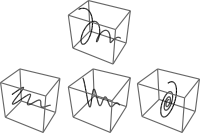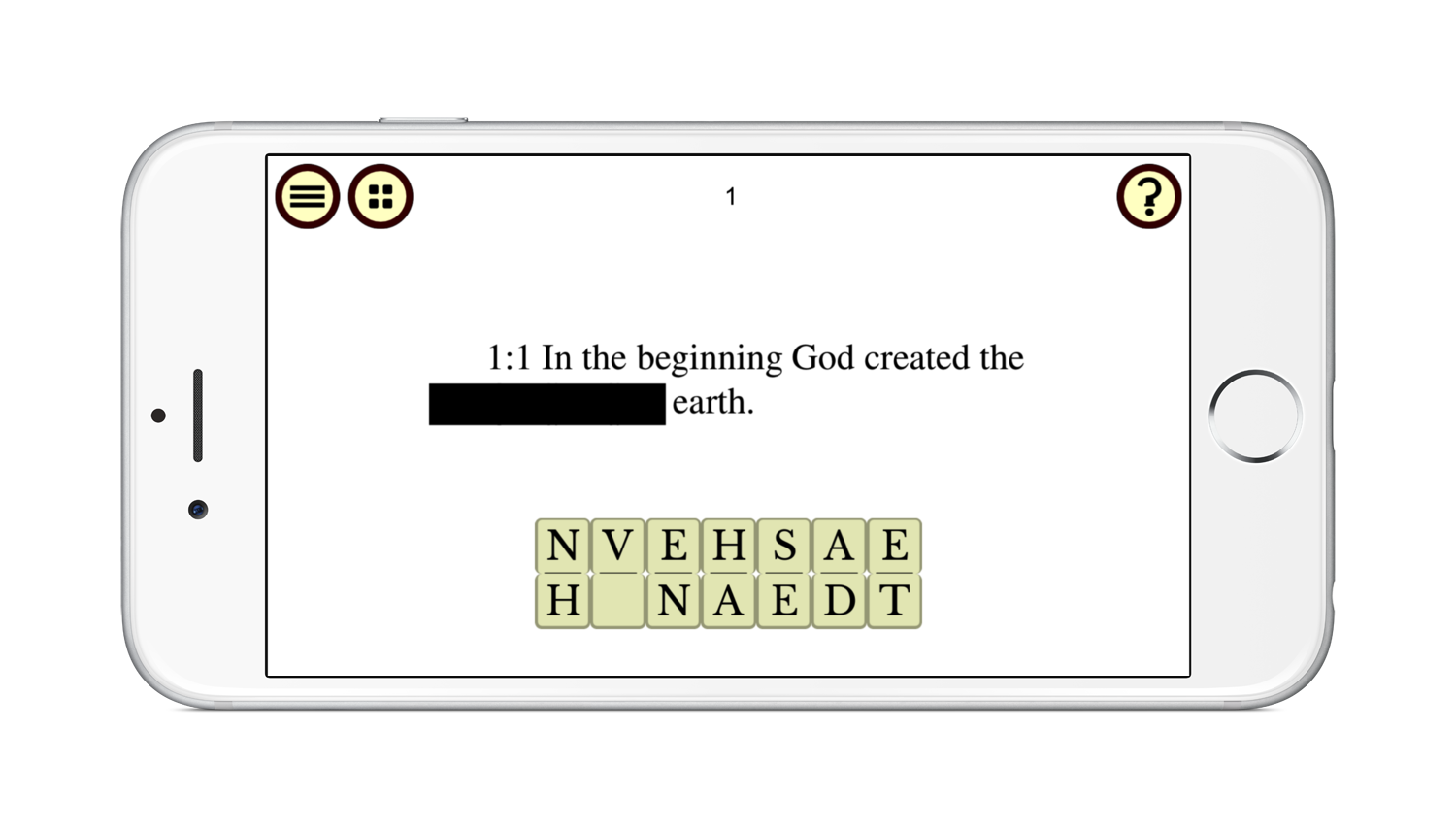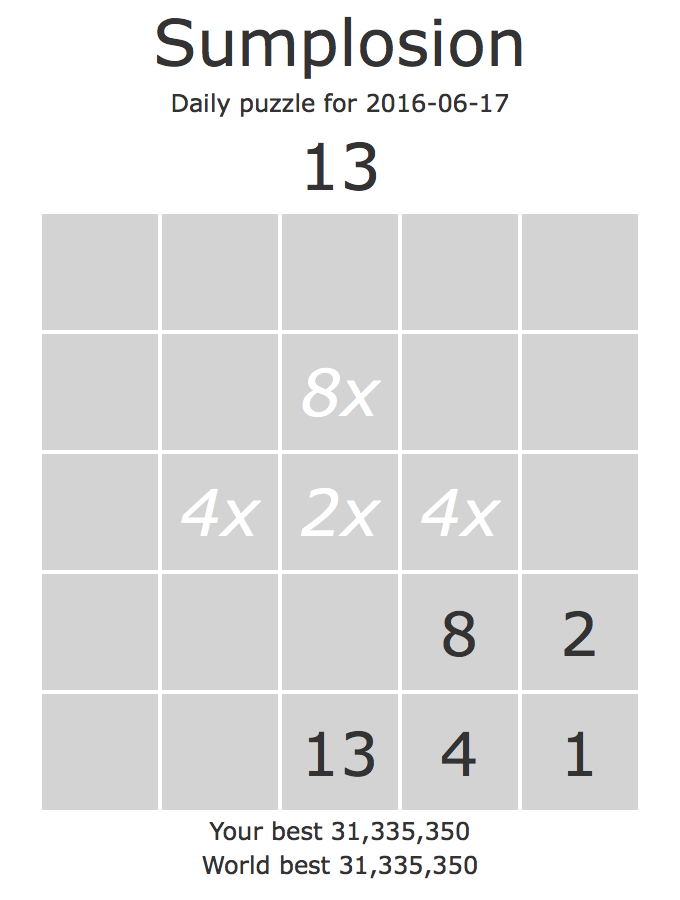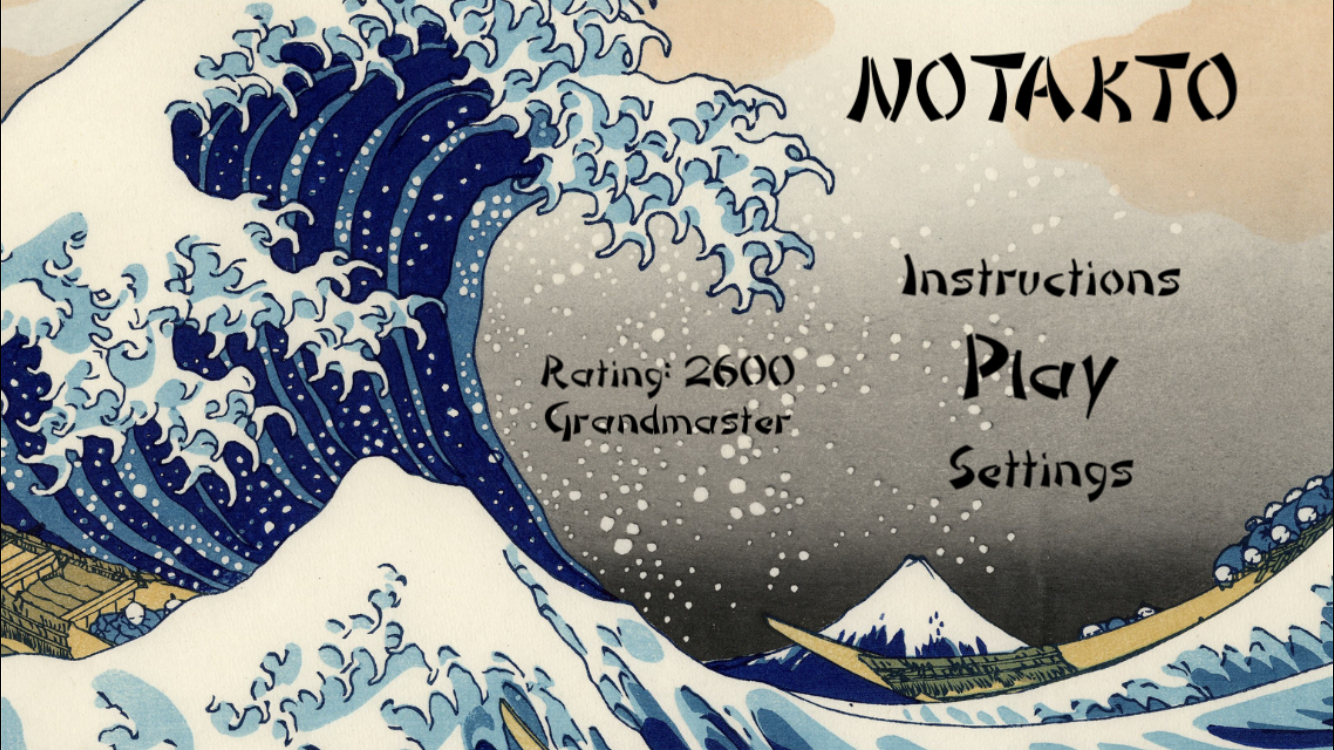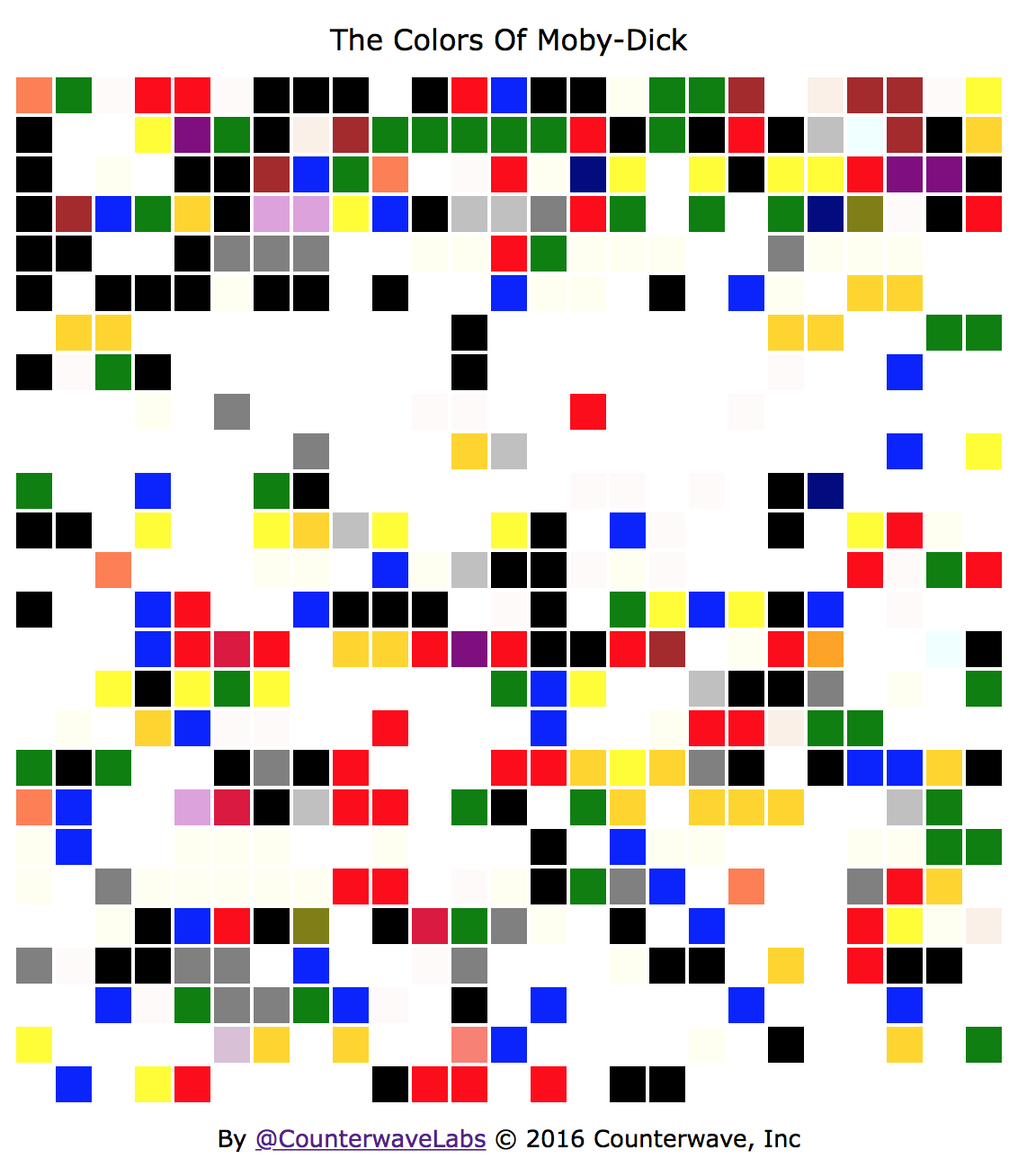OKBOS, the book unscrambling game, is now available for iOS and Android!
Reconnect with an old favorite or discover a new one by playing any (or all!) of the following books included in OKBOS:
- Alice’s Adventure’s in Wonderland
- Through the Looking-Glass
- Little Women
- Sense and Sensibility
- Pride and Prejudice
- Jane Eyre
- The Adventures of Sherlock Holmes
- Memoirs of Sherlock Holmes
- The Return of Sherlock Holmes
Over 40,000 puzzles in total!
Learn more here.
IBBLE Now Available
IBBLE, the King James Bible unscrambling game, is now available for iOS and Android!
Are you looking for an even more monumental challenge than the 10,395 puzzles of OMBY? If so, you might be interested in IBBLE, with over 39,000 puzzles!
The text of the entire KJV is included, both the Old Testament and the New, in its usual organization into individual books.
Learn more here.
OMBY on Android
OMBY, the Moby-Dick unscrambling game, is now available for both iOS and Android!
Learn more here.
JSMarkov
JSMarkov is a simple javascript library for Markov text generation based on word-level trigraph models that we’re releasing under an MIT license.
With JSMarkov you can generate random text in the style of Moby-Dick:
Ah! how cheerfully we consign ourselves to perdition! Finally, I do not enjoy themselves much, as every one knows, meditation and water are wedded for ever. But wherefore it was that after having repeatedly smelt the sea as a sailor, I thought I would sail about a little and see the mummies of those creatures in their huge bake-houses the pyramids. No, when first told that you see the mummies of those creatures in their degree, some time or other, cherish very nearly the same time that the leaders little suspect it. Besides, passengers themselves must pay. And there they stand—miles of them—leagues. Inlanders all, they come from lanes and alleys, streets and avenues—north, east, south, and bringing up the rear of every kind whatsoever. It is a damp, drizzly November in my purse, and in the air.
Or Alice’s Adventures in Wonderland:
So she set to work, and to her very earnestly, ‘and see whether it’s marked “poison” or not’; for she had not noticed before, and noticed that they were all locked; and that if you cut your finger VERY deeply with a knife, it usually bleeds; and if it makes me grow larger, I think I could, if I fell off the cake. * * * * * ‘What a curious feeling!’ said Alice to herself, rather sharply; ‘for it flashed across her mind that she ought to have wondered at this, I shall have to ask: perhaps I shall fall right THROUGH the earth! How brave they’ll all think me at home! Why, there’s no use now,’ said Alice to herself, ‘and if it makes me grow smaller, I shall think nothing of tumbling down stairs! How brave they’ll all think me at home! Why, I think I could, if I fell off the top of her head to feel which way it was good practice to say it over) ‘—but then I wonder if I only knew how to begin.’ For, you know,’ she said, ‘Oh dear! Oh dear! I think—’ (for, you know. Please, Ma’am, is this New Zealand or Australia?’ for, you see, so suddenly that Alice had no pictures or conversations in it a very deep, or the key was too dark to see it pop down a large rabbit-hole under the hedge.
Then the wild and distant seas where he rolled his island bulk; the undeliverable, nameless perils of the doors of the doors of the earth! How funny it’ll seem to come out among the people that walk with their heads downward! The Antipathies, I am in the habit of going to do THAT in a game of croquet she was now the right size for going through the doorway; ‘I must be shutting up like a tunnel for some way, and Alice’s first thought was that after having repeatedly smelt the sea as a sort of officer on ship-board—yet, now that I recall all the circumstances, I always go to sea as soon as I can. This is my substitute for pistol and ball. With a philosophical flourish Cato throws himself upon his sword; I quietly take to the ship. There was nothing so VERY remarkable in that particular instance? Who ain’t a slave? Tell me that. Well, then, I should now take it into one of the whale; these, with all the difference in the stream. There seemed to be seen: she knelt down and looked at the same feelings towards the ocean with me.
Or you can parody political figures:
Look, having nuclear—my uncle explained that to me many, many years ago, the white belt of wampum was the deepest pledge of honour; though in other mortal sympathies and symbolizings, this same hue is made the emblem of many touching, noble things – the innocence of brides, the thing that really bothers me—it would have been so easy, and they, they don’t, they haven’t figured that the women are smarter right now than the men, so, you know I have to give my like credentials all the time, because we’re a little disadvantaged—but the Persians are great negotiators, so, you know, it’s gonna take them about another 150 years—but the Persians are great negotiators, so, and the modern kings of Siam unfurling the same imperial hue; and the great Austrian Empire, Caesarian, heir to overlording Rome, having nuclear—my uncle was a great professor and scientist and engineer, Dr. John Trump at MIT; good genes, very good genes, OK, very smart, the power of what’s going on with the four prisoners—now it used to be three, now it’s four—but when it was three and even now, I would have been so easy, and it is fellas because, you know, they don’t, they just killed us.
What will you do with it?
Get it here https://github.com/counterwave/jsmarkov and give it a try yourself.
Notakto Ratings
Notakto ratings are loosely based on the Elo rating system used in chess. New players start with a rating of 1400 and move up or down based on their wins and losses, the difficulty setting of the computer opponent, and the number of boards in the games played.
Here’s the complete list of ratings and titles:
| Rating | Title | |
|---|---|---|
| 900 | Beginner | |
| 1500 | Tyro | |
| 1600 | Class A | |
| 1700 | Coffeehouse | |
| 1800 | Intermediate | |
| 1900 | Crossmaker | |
| 2000 | Club Player | |
| 2100 | Expert | |
| 2200 | Master | |
| 2500 | Senior Master | |
| 2600 | Grandmaster | |
| 2800 | International Grandmaster | |
| 3200 | Notakto World Champion |
Sumplosion
Today we’re launching a new daily puzzle called Sumplosion. This is a game in progress:
The idea is to tap on cells in the grid, summing up the neighboring cells, in an attempt to get to an absurdly large value. Plan your path to use the multipliers to maximum advantage.
Do you think you can beat 31,335,350 on this puzzle? [Edit: After only a few hours, the high score is up to 67,320,064!]
There are 25! = 15511210043330985984000000 ways to fill in the 5x5 grid and the pattern of multipliers will change daily.
Play the beta here: http://labs.counterwave.com/sumplosion/
There will be a new puzzle every day!
Grandmaster Notakto
WARNING: This post contains some Notakto spoilers. They begin after the screenshot below.
If you’ve played Notakto enough to learn how to reliably beat the app on its Insane setting, you know the following:
- It’s only possible to beat the app in its Insane mode when you elect to move first from an odd number of boards, or alternatively second from an even number of boards.
- It’s not necessary to know how to play an arbitrary Notakto position in order to win. In fact, as long as you have certain board types memorized, it’s possible to “control” the game so that you never have to face a truly unfamiliar position.
What’s left then for a person to do with the app after you’ve mastered it to this level?
Here is a suggestion for such Notakto Grandmasters.
Play the app like this, instead:
- Play it at the “Hard” rather than “Insane” setting.
- Elect to play second with an odd number of boards, or first with an even number.
Playing the game this way puts you, the Notakto Grandmaster, at a decided disadvantage. In fact, if you had chosen the “Insane” setting instead, it would have put you at an absolute disadvantage (ie, you wouldn’t be able to win at all). But at the “Hard” level, the app makes mistakes occasionally. As a Notakto Grandmaster, it’s your task to be able to spot those mistakes and then exploit them.
As you’re developing this skill, it’s useful to press the “Hint” button occasionally to check your understanding. The Hint button is only available in Practice Mode.
This new way of playing Notakto is decidedly more difficult because it involves a much greater knowledge of the exact misere quotient values in the game. Don’t know about misere quotients? Here is a paper that explains them.
You’ll find yourself suddenly curious about the exact symbols underneath each Notakto board type in the figure of that paper that appears at its very end (after the references). Can you handle all the situations that arise?
It’s not easy. Give it a try.
Good luck!
Learn more about Notakto on the Numberphile YouTube channel:
Or read the complete mathematical theory of the game here:
Moby-Dick; or, TL;DR
Do you find the length of Moby-Dick daunting? Can technology help? Let’s see!
We were playing around with the MEAD automatic text summarization system recently and had the idea of running it on Moby-Dick. MEAD uses various algorithms to select whole sentences from a document to produce a summary of some specified length.
If you are only going to read one sentence of Moby-Dick, which should it be? MEAD says it should be this sentence from chapter 42:
Though in many natural objects, whiteness refiningly enhances beauty, as if imparting some special virtue of its own, as in marbles, japonicas, and pearls; and though various nations have in some way recognised a certain royal preeminence in this hue; even the barbaric, grand old kings of Pegu placing the title “Lord of the White Elephants” above all their other magniloquent ascriptions of dominion; and the modern kings of Siam unfurling the same snow-white quadruped in the royal standard; and the Hanoverian flag bearing the one figure of a snow-white charger; and the great Austrian Empire, Caesarian, heir to overlording Rome, having for the imperial colour the same imperial hue; and though this pre-eminence in it applies to the human race itself, giving the white man ideal mastership over every dusky tribe; and though, besides, all this, whiteness has been even made significant of gladness, for among the Romans a white stone marked a joyful day; and though in other mortal sympathies and symbolizings, this same hue is made the emblem of many touching, noble things–the innocence of brides, the benignity of age; though among the Red Men of America the giving of the white belt of wampum was the deepest pledge of honour; though in many climes, whiteness typifies the majesty of Justice in the ermine of the Judge, and contributes to the daily state of kings and queens drawn by milk-white steeds; though even in the higher mysteries of the most august religions it has been made the symbol of the divine spotlessness and power; by the Persian fire worshippers, the white forked flame being held the holiest on the altar; and in the Greek mythologies, Great Jove himself being made incarnate in a snow-white bull; and though to the noble Iroquois, the midwinter sacrifice of the sacred White Dog was by far the holiest festival of their theology, that spotless, faithful creature being held the purest envoy they could send to the Great Spirit with the annual tidings of their own fidelity; and though directly from the Latin word for white, all Christian priests derive the name of one part of their sacred vesture, the alb or tunic, worn beneath the cassock; and though among the holy pomps of the Romish faith, white is specially employed in the celebration of the Passion of our Lord; though in the Vision of St. John, white robes are given to the redeemed, and the four-and-twenty elders stand clothed in white before the great-white throne, and the Holy One that sitteth there white like wool; yet for all these accumulated associations, with whatever is sweet, and honourable, and sublime, there yet lurks an elusive something in the innermost idea of this hue, which strikes more of panic to the soul than that redness which affrights in blood.
Yes, that’s one sentence! As it turns out, it’s the longest sentence of the book.
More interesting, perhaps, is to read one sentence from each chapter. MEAD selects these:
CHAPTER 1
Whenever I find myself growing grim about the mouth; whenever it is a damp, drizzly November in my soul; whenever I find myself involuntarily pausing before coffin warehouses, and bringing up the rear of every funeral I meet; and especially whenever my hypos get such an upper hand of me, that it requires a strong moral principle to prevent me from deliberately stepping into the street, and methodically knocking people’s hats off–then, I account it high time to get to sea as soon as I can.
CHAPTER 2
I stuffed a shirt or two into my old carpet-bag, tucked it under my arm, and started for Cape Horn and the Pacific.
CHAPTER 3
Entering that gable-ended Spouter-Inn, you found yourself in a wide, low, straggling entry with old-fashioned wainscots, reminding one of the bulwarks of some condemned old craft.
CHAPTER 4
The counterpane was of patchwork, full of odd little parti-coloured squares and triangles; and this arm of his tattooed all over with an interminable Cretan labyrinth of a figure, no two parts of which were of one precise shade–owing I suppose to his keeping his arm at sea unmethodically in sun and shade, his shirt sleeves irregularly rolled up at various times–this same arm of his, I say, looked for all the world like a strip of that same patchwork quilt.
CHAPTER 5
I quickly followed suit, and descending into the bar-room accosted the grinning landlord very pleasantly.
CHAPTER 6
If I had been astonished at first catching a glimpse of so outlandish an individual as Queequeg circulating among the polite society of a civilized town, that astonishment soon departed upon taking my first daylight stroll through the streets of New Bedford.
…
Not bad. Read them all here: Moby-Dick; or, TL;DR.
Pixelated Moby-Dick
We took it up a notch from our Colors of Moby-Dick infographic and rendered the entire text of Moby-Dick with one pixel for each span of text delimited by punctuation. We call it Pixelated Moby-Dick.
Like our Ahab vs The Whale infographic for OMBY, we’ve highlighted mentions of Ahab vs The Whale. Wherever Ahab is mentioned, the pixel is black; wherever Moby Dick (aka White Whale) is mentioned, the pixel is white. If both are mentioned, the pixel is red.
Click through for the interactive version and hover over a pixel (or tap it on a touch device) to reveal the underlying text. If you’re very patient, you can read the entire book this way. ;-)
Colors of Moby-Dick
Have you ever wondered how many CSS color names are mentioned in Moby-Dick?
If so, then we have the infographic for you: we call it The Colors of Moby-Dick and each colored square (including white!) corresponds to a CSS color mentioned in the text of Moby-Dick, in order from beginning to end.
Click through for the interactive version and hover over each square to reveal the text. If you’re on a touch device, don’t despair, you can also tap the square (yes, we hate that hover doesn’t work on touch devices too).
more posts...
subscribe via RSS
